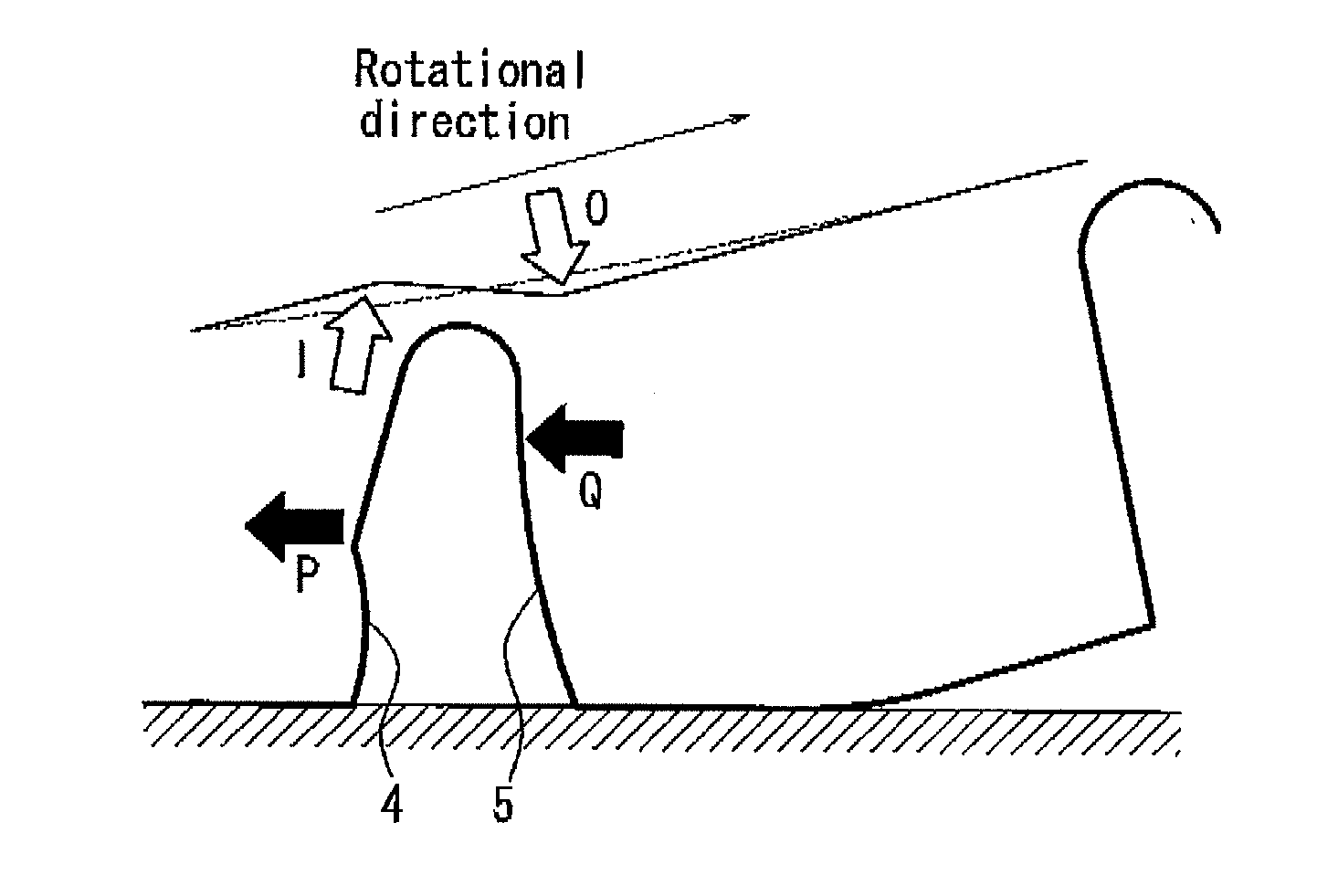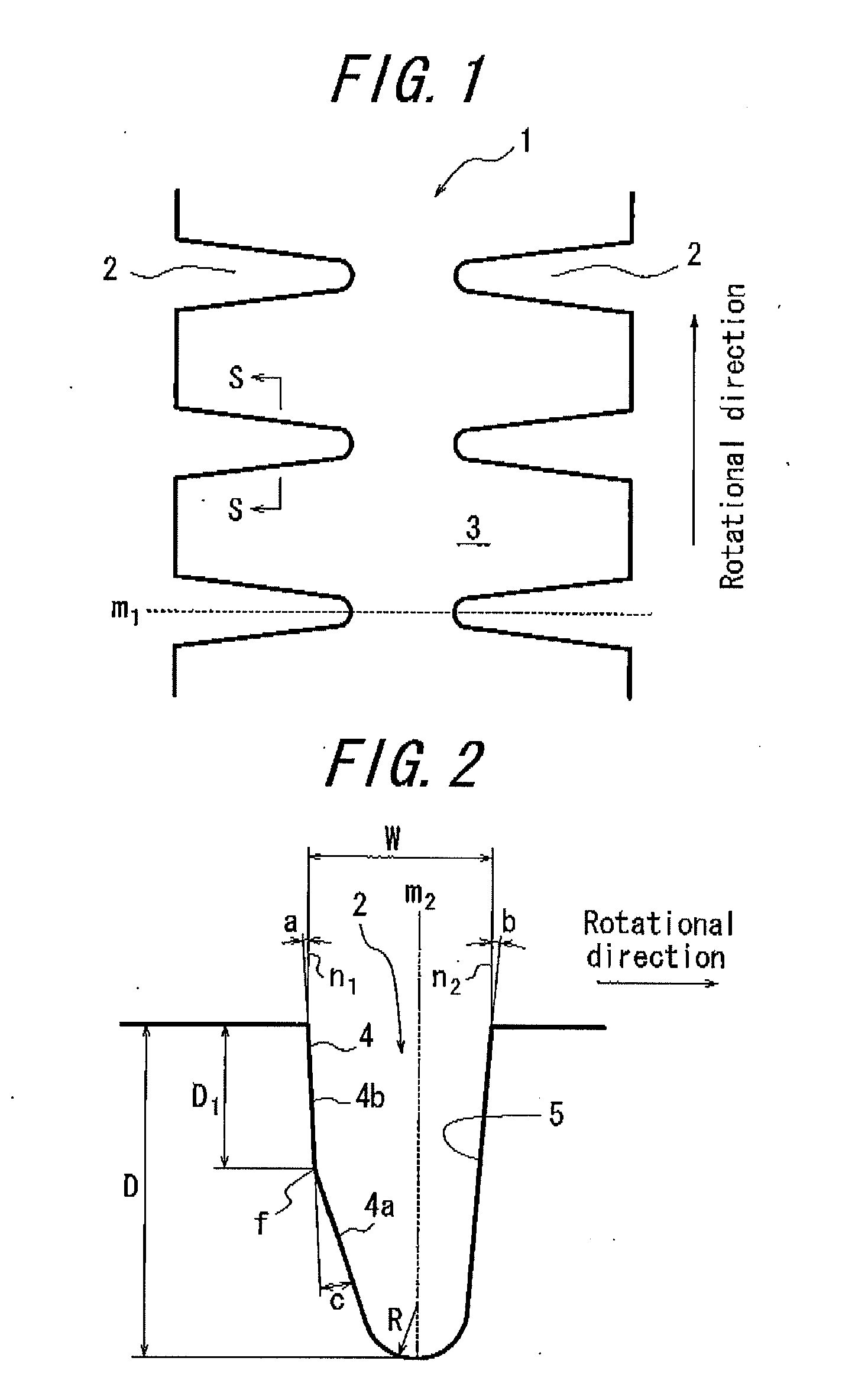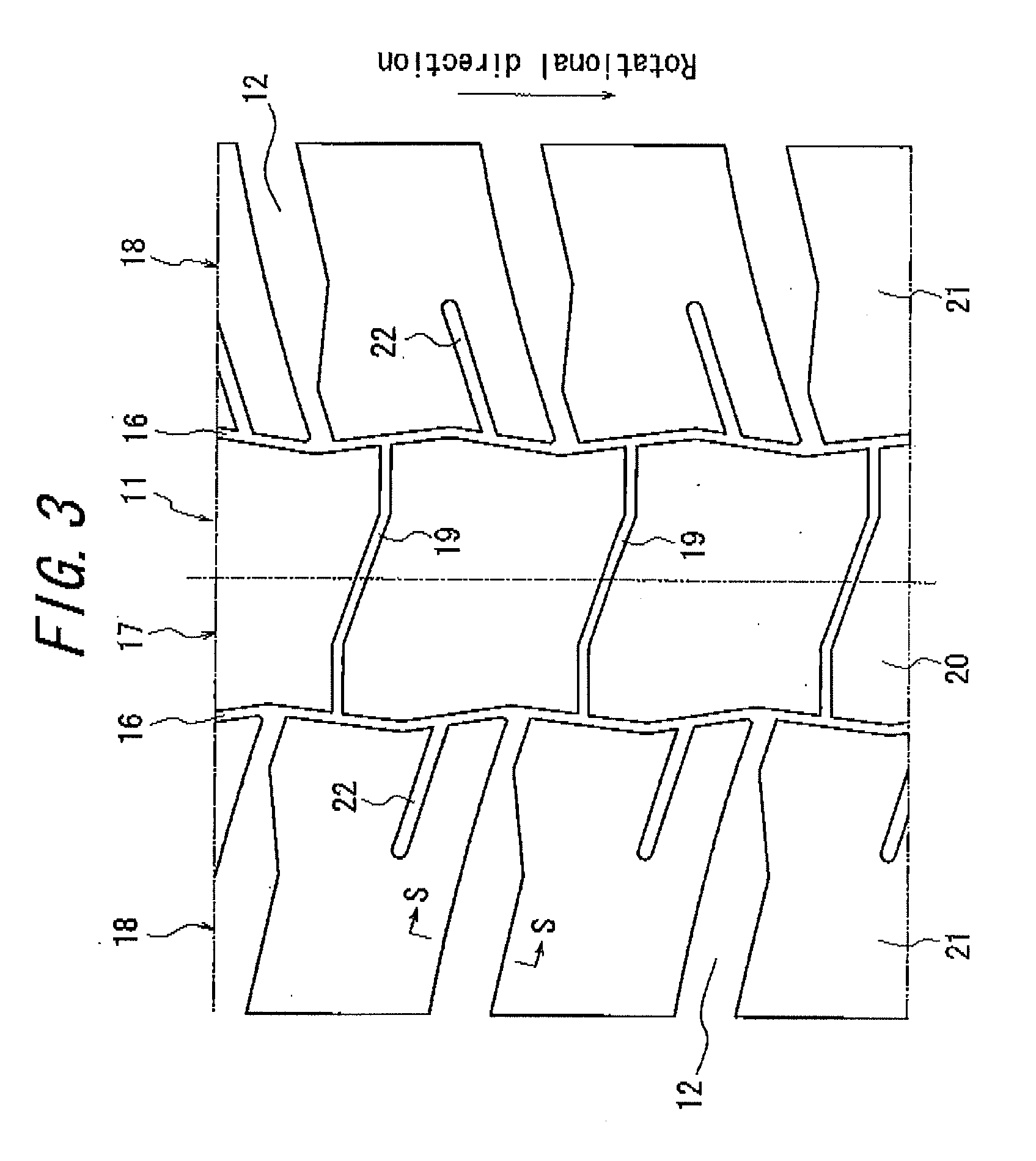Pneumatic radial tire for heavy load
a radial tire and pneumatic technology, applied in the direction of non-skid devices, vehicle components, transportation and packaging, etc., can solve the problems of reducing the amount of rubber of the generating cracks at the groove bottom, and deteriorating wear resistance at the tread surface of the land portion. , to achieve the effect of reducing a bending angle, reducing the slippage of the trailing edge of the other land portion relative to the road surface, and reducing the bending angle angl
- Summary
- Abstract
- Description
- Claims
- Application Information
AI Technical Summary
Benefits of technology
Problems solved by technology
Method used
Image
Examples
example 1
[0053]Radial tires with block patterns and size 46 / 90R57 having the structures as shown in FIG. 2 and FIG. 3, respectively, are prepared. An amount of slip of the trailing edge of the block is measured for each of Example tires 1 and 2 according to the present invention and Comparative Example tire, the characteristics of which tires are changed as shown in Table 1.
Comparative Example tire is prepared basically in the same manner as Examples tires because the former requires no modification from the latter, except that a groove wall of a lug groove of the former should have the conventional structure.
TABLE 1Example Example Comparative tire 1tire 2Example tirea (°)959b (°)959c (°)9150 D (mm)97.197.197.1D1 (mm)5060—
[0054]Each of Example tires 1 and 2 and Comparative Example tire is assembled with a rim of 1.45 (m)×0.74 (m) (57 (inch)×29 (inch)) and inflated at an internal pressure of 700 kPa. Each tire is rotated with load mass of 62000 kg applied thereon, and an amount of slip of the...
PUM
 Login to View More
Login to View More Abstract
Description
Claims
Application Information
 Login to View More
Login to View More - R&D
- Intellectual Property
- Life Sciences
- Materials
- Tech Scout
- Unparalleled Data Quality
- Higher Quality Content
- 60% Fewer Hallucinations
Browse by: Latest US Patents, China's latest patents, Technical Efficacy Thesaurus, Application Domain, Technology Topic, Popular Technical Reports.
© 2025 PatSnap. All rights reserved.Legal|Privacy policy|Modern Slavery Act Transparency Statement|Sitemap|About US| Contact US: help@patsnap.com



